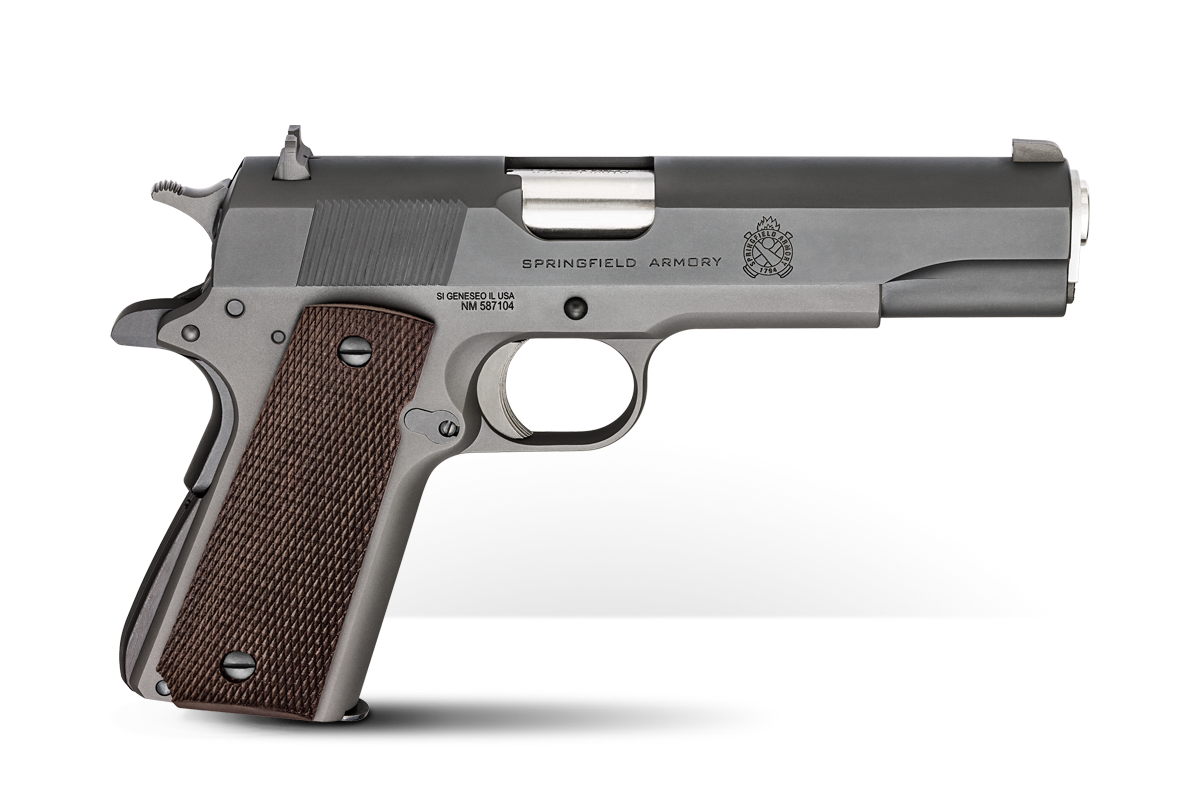Tom Laemlein introduces us to the experiences and equipment of these brave men who boldly entered the Black Echo.
When the U.S. military deployed to Vietnam, it did so with the M1911 semi-automatic pistol on its hip.
The rugged pistol soldiered on, sturdy and reliable as ever.
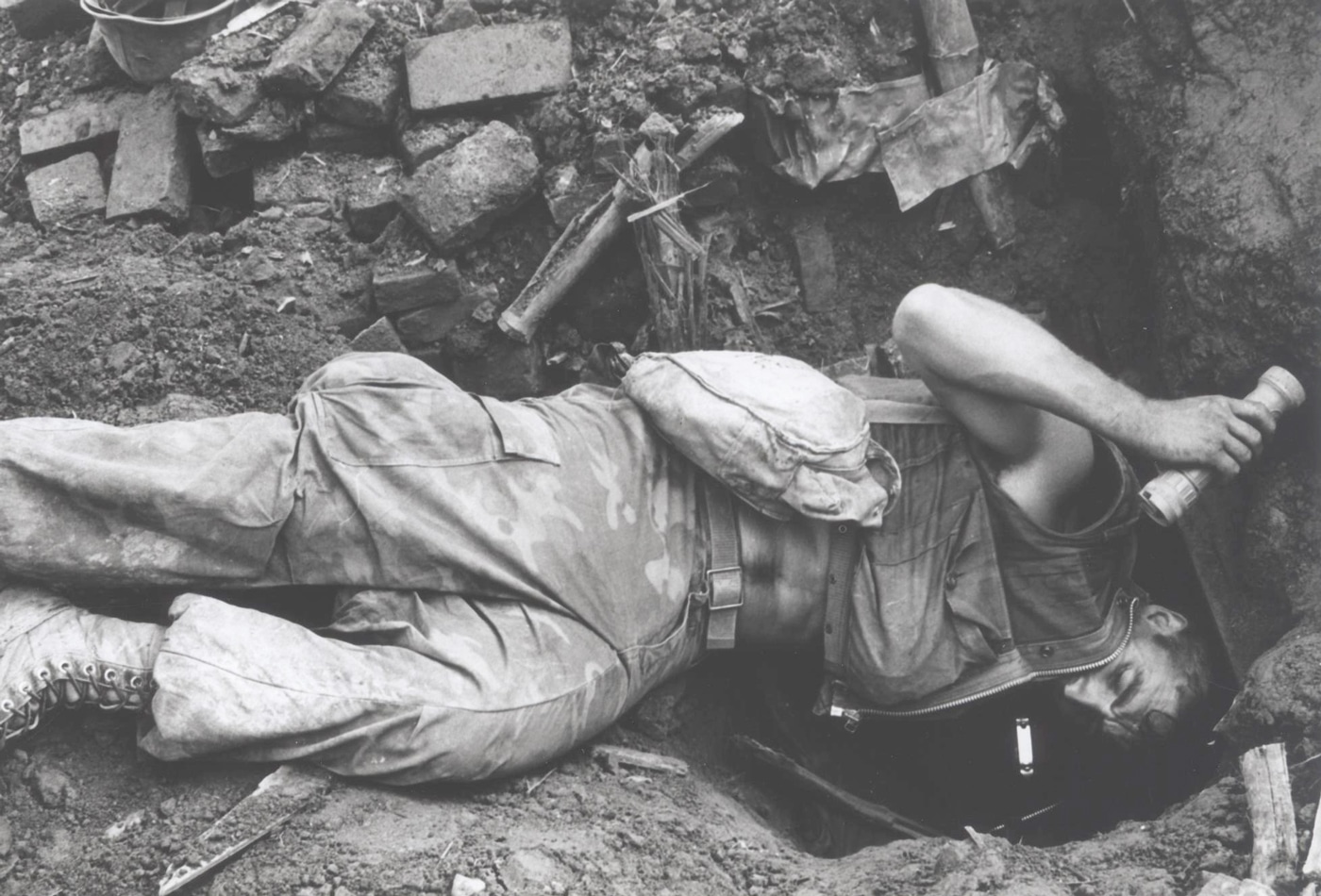
Lance Cpl. John R. Gartrell, a United States Marine Corps tunnel rat, enters an enemy bunker during Operation Meade River near Da Nang, Vietnam. Image: U.S.M.C.
American troops loved them, and why wouldnt they?
The M1911 gave a man a sense of confidence.
Many GIs believed that big .45 ACP pistol was worth the extra weight.
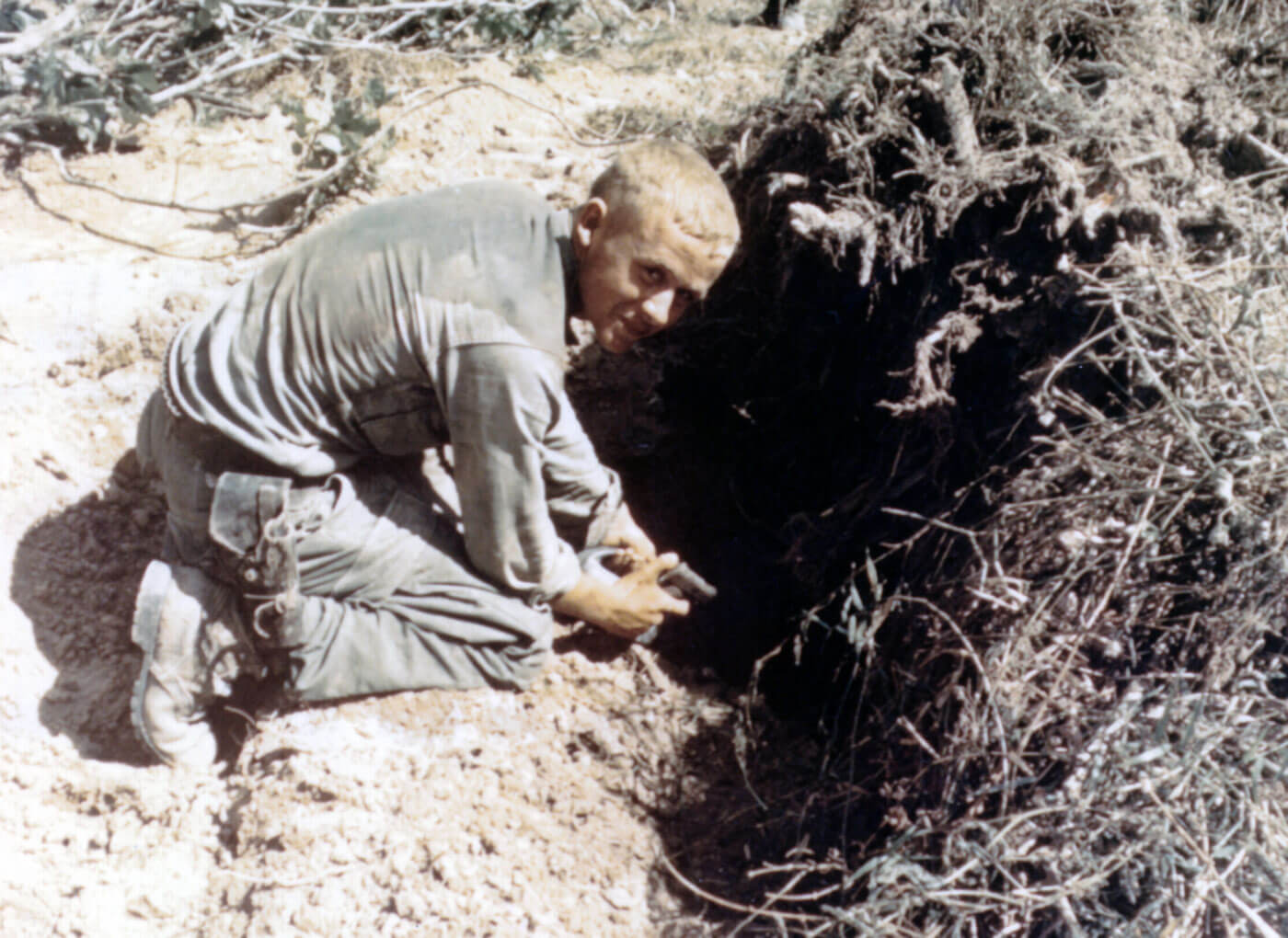
Going underground with the 25th Infantry Division during Operation Atlanta in the “Iron Triangle” area, December 1967. Images: NARA
Officers and crew-served weapon crews often carried them.
MPs, helicopter crews and grenadiers, too.
For almost every American soldier who carried one in Vietnam, the pistol represented a back-up gun.
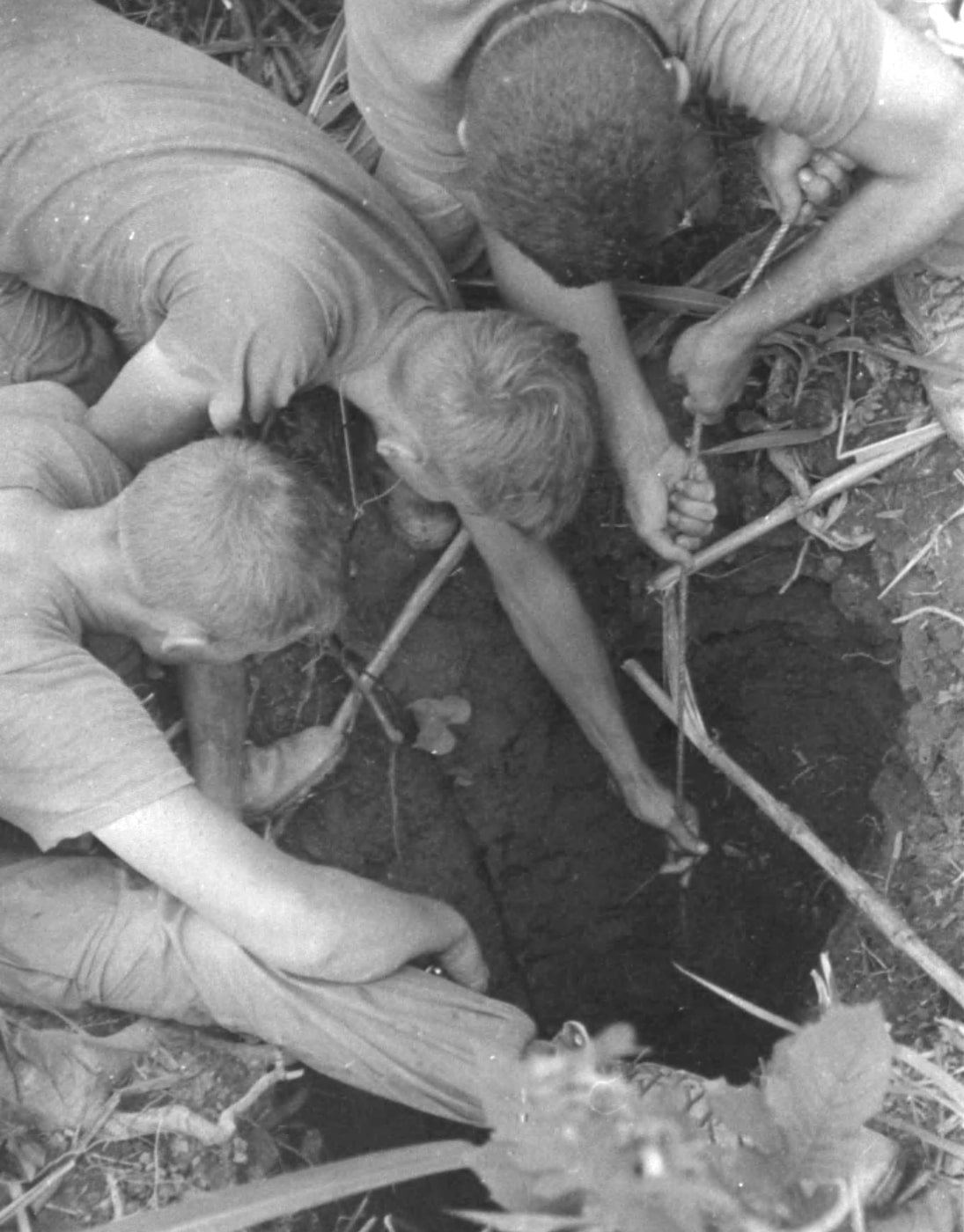
Marines of Second Battalion, Fourth Marines assist a tunnel rat who was lowered into a North Vietnamese tunnel dug into the side of a mountain. Image: NARA
But not the tunnel rats, Americas subterranean warriors that would head underground in the jungles of Vietnam.
Tunnel rats used their pistol as a primary weapon.
No other firearm would be effective in their battleground below ground due to cramped spaces.
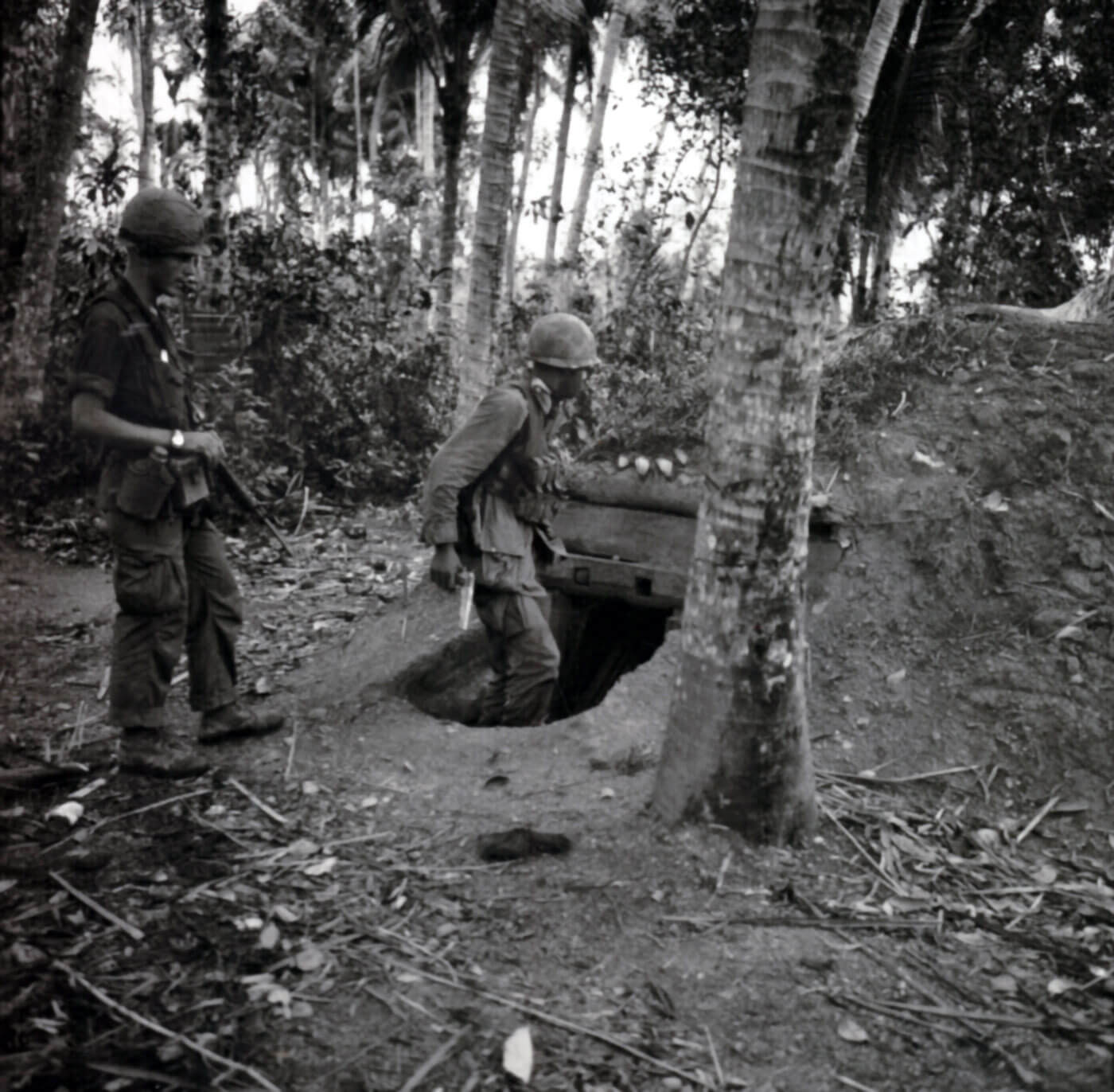
Men of the 8th Infantry begin the dangerous process of searching a Viet Cong bunker near Mi Duc, South Vietnam during August 1967.
The M1911 was the one pistol ready for action in Vietnam tunnel warfare.
The complex maze of passages was a defense system unto itself.
Just one of the dangerous risks of the tunnel rats job was becoming lost in the underground tunnel connection.
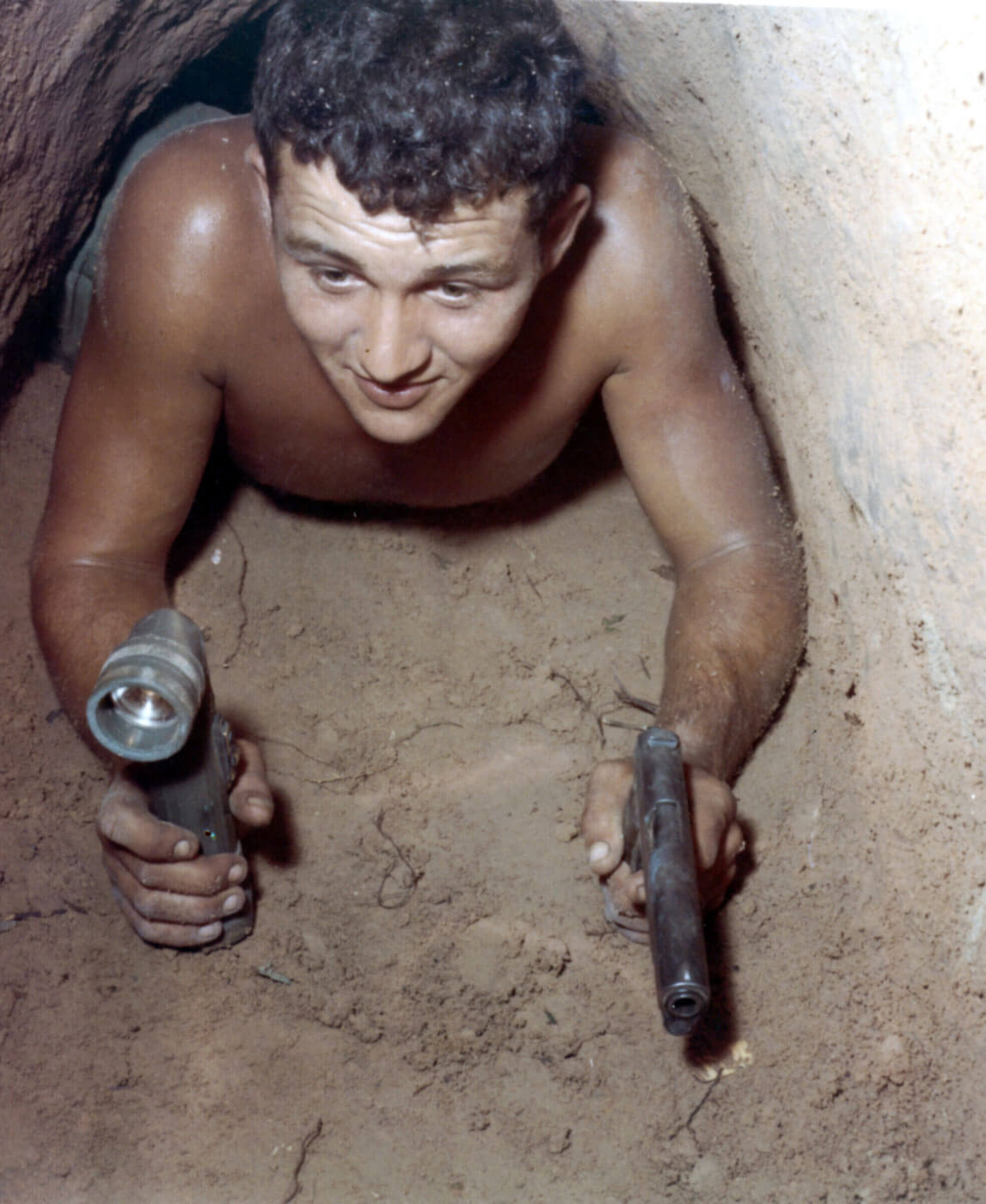
A squad leader of the 25th Infantry Division in a VC tunnel. He is armed with a M1911 pistol and a GI issue flashlight.
It was a multiple-threat environment in Vietnam, even underground.
The tunnel rats had a nickname for the dark, tight confines of the tunnels: the Black Echo.
But even in those unexpected parameters, the M1911 was very successful.
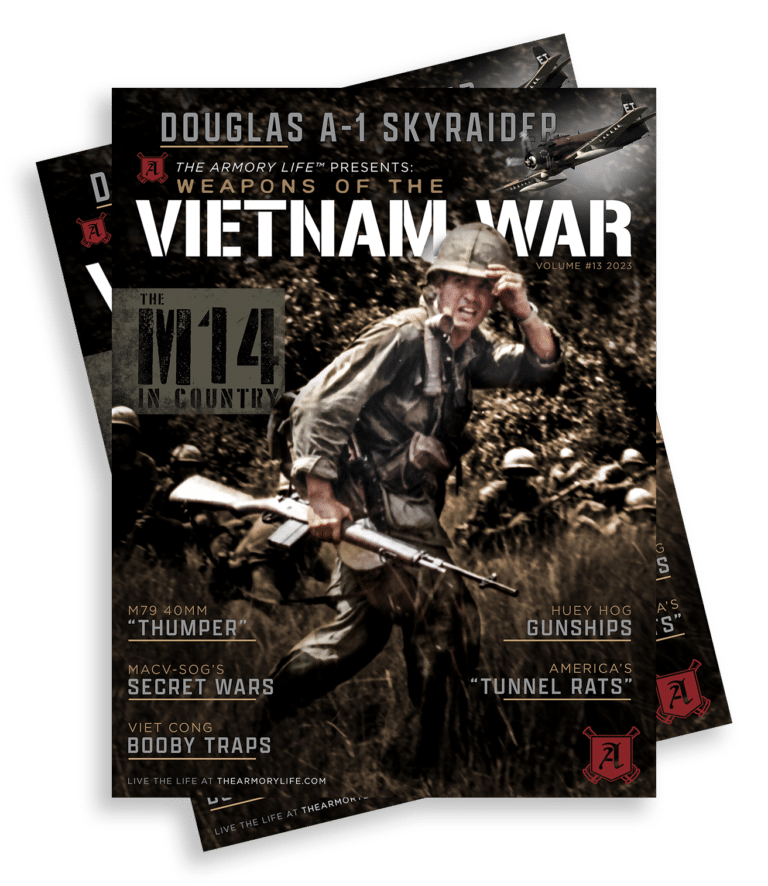
One shot was enough to end many confrontations.
A few silenced pistols made their way to Vietnam and were used by the tunnel rats.
Suppressors could be a huge benefit to any tunnel rat who engaged enemy fighters in the enclosed spaces.
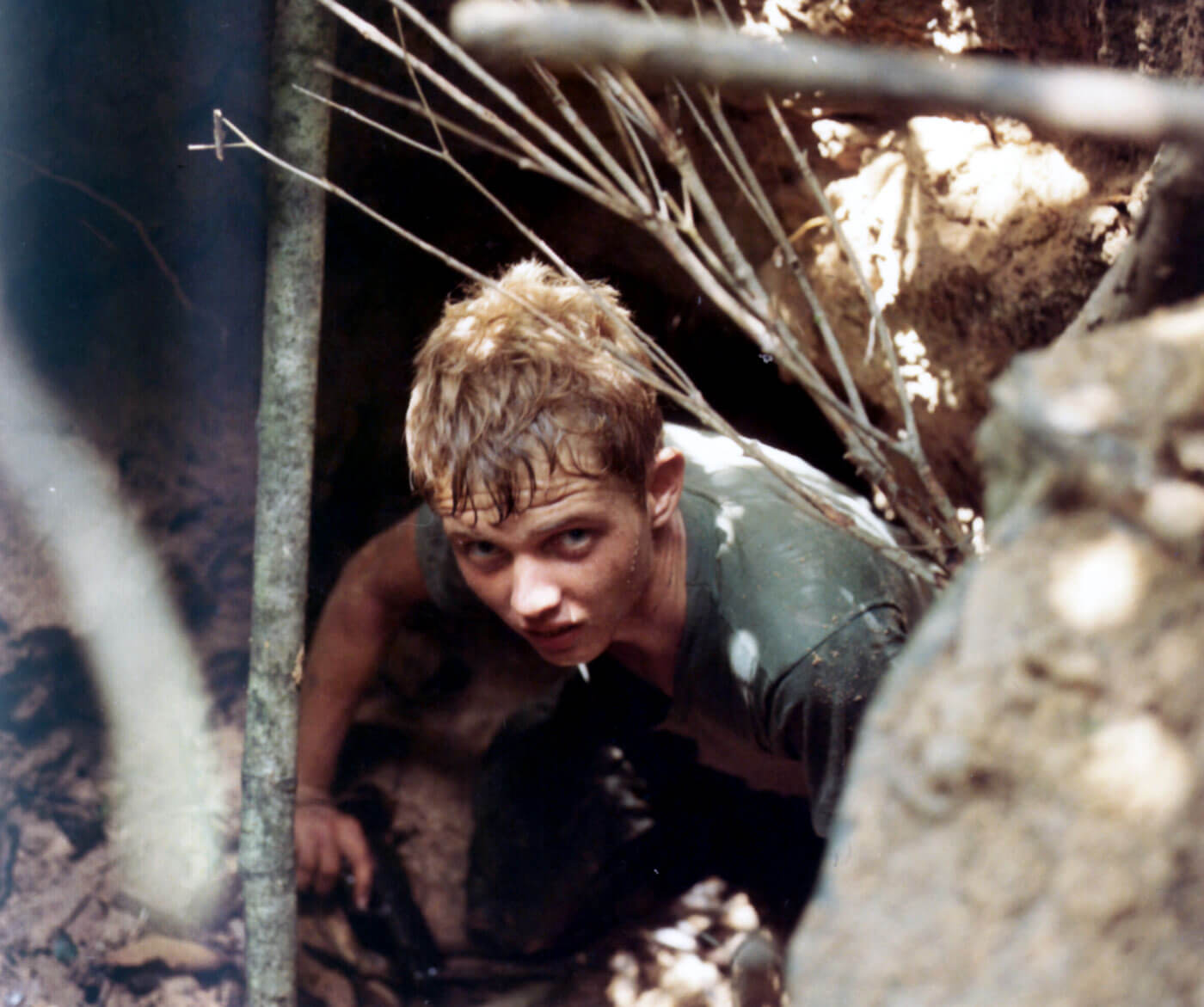
A United States Army soldier of the 25th Infantry Division emerges from a Viet Cong tunnel in October 1967.
Ultimately, shooting underground was a last resort.
Then check out theSpringfield Armory 1911 Mil-Spec.45 ACP.
This pistol has a suggested retail price of $725.
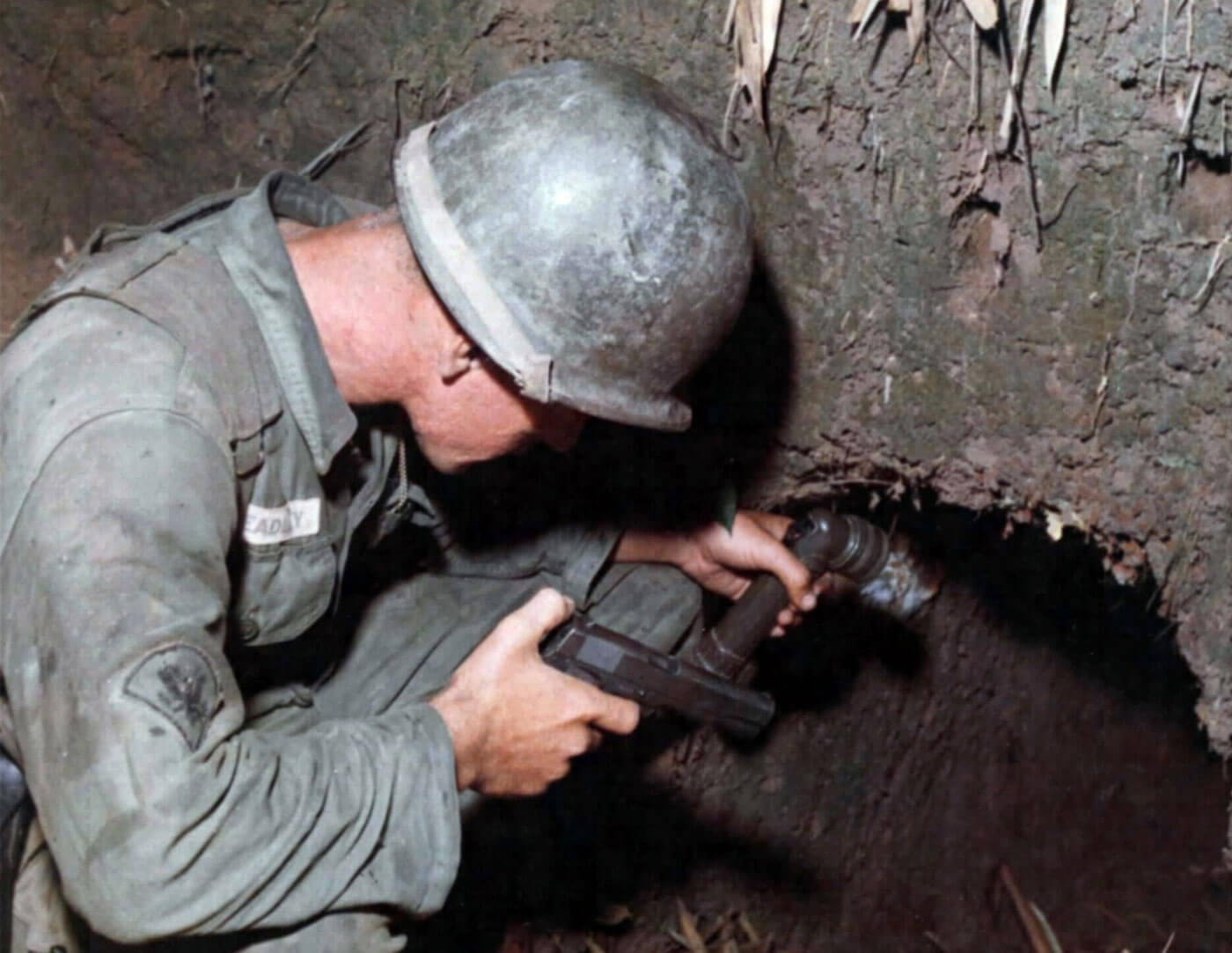
Entrance of a large tunnel complex near Phu Hoa Dong, Republic of Vietnam, circa January 1967.
An attractive Parkerized finish and a 7-round magazine rounds out the package.
Conclusion
Humans are naturally afraid of the dark.
Our night vision isnt as good as many predatory animals so it is a perfectly reasonable fear.
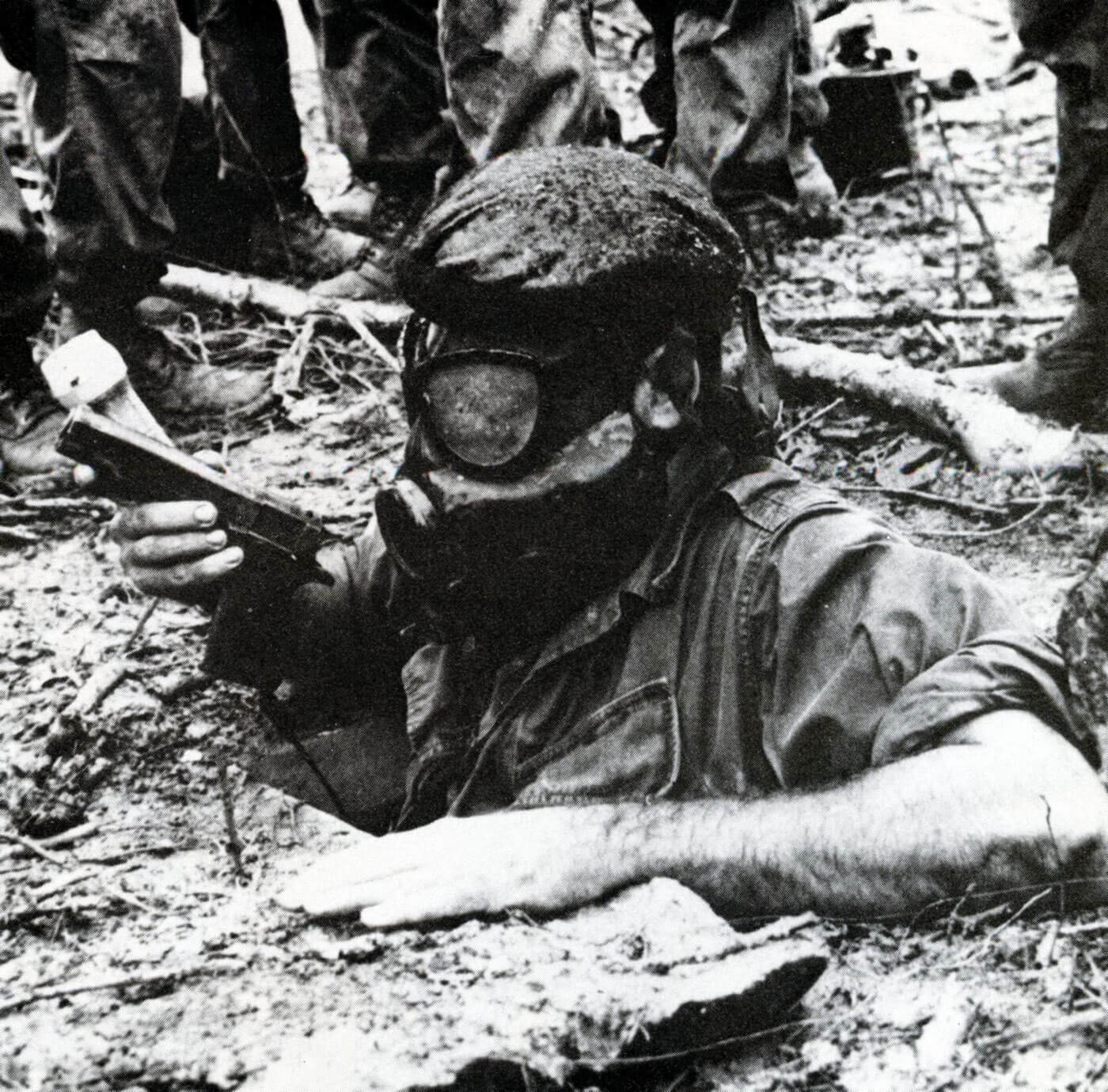
Many tunnels were pumped full of gas and some tunnel rats chose to wear a gas mask despite the fact it inhibited their vision.
Likewise enclosed environments never mind an enemy that is trying to kill you is a source of reasonable concern.
These men who served in Vietnam should never be forgotten.
Go to forum thread
1911Mil-Spec
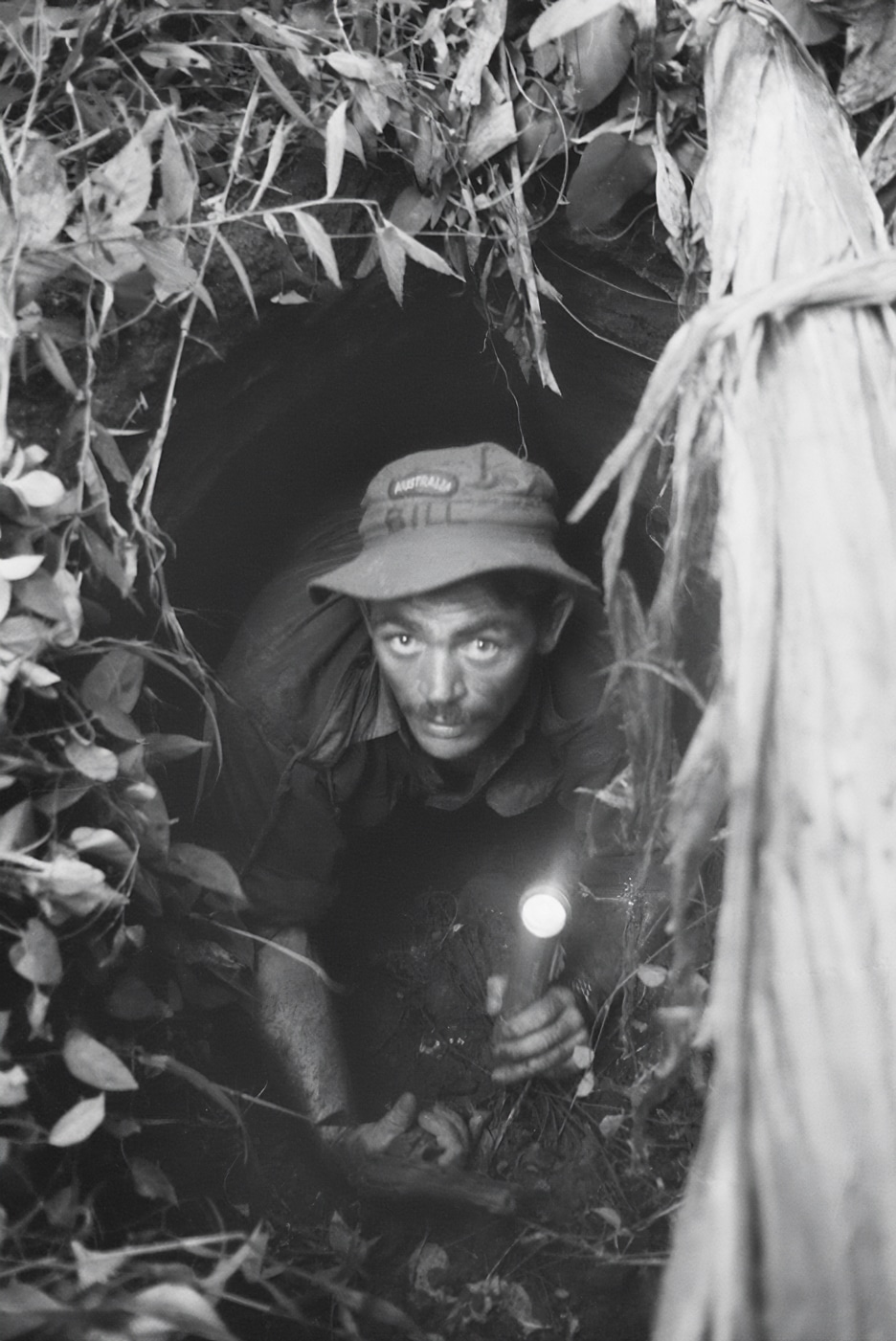
Cpl. William Whitfield of the Australian Army emerges from a Viet Cong tunnel with a flashlight and pistol. Australia was one ofAmerica’s allies in the Vietnam War. Image: AWM/Public Domain
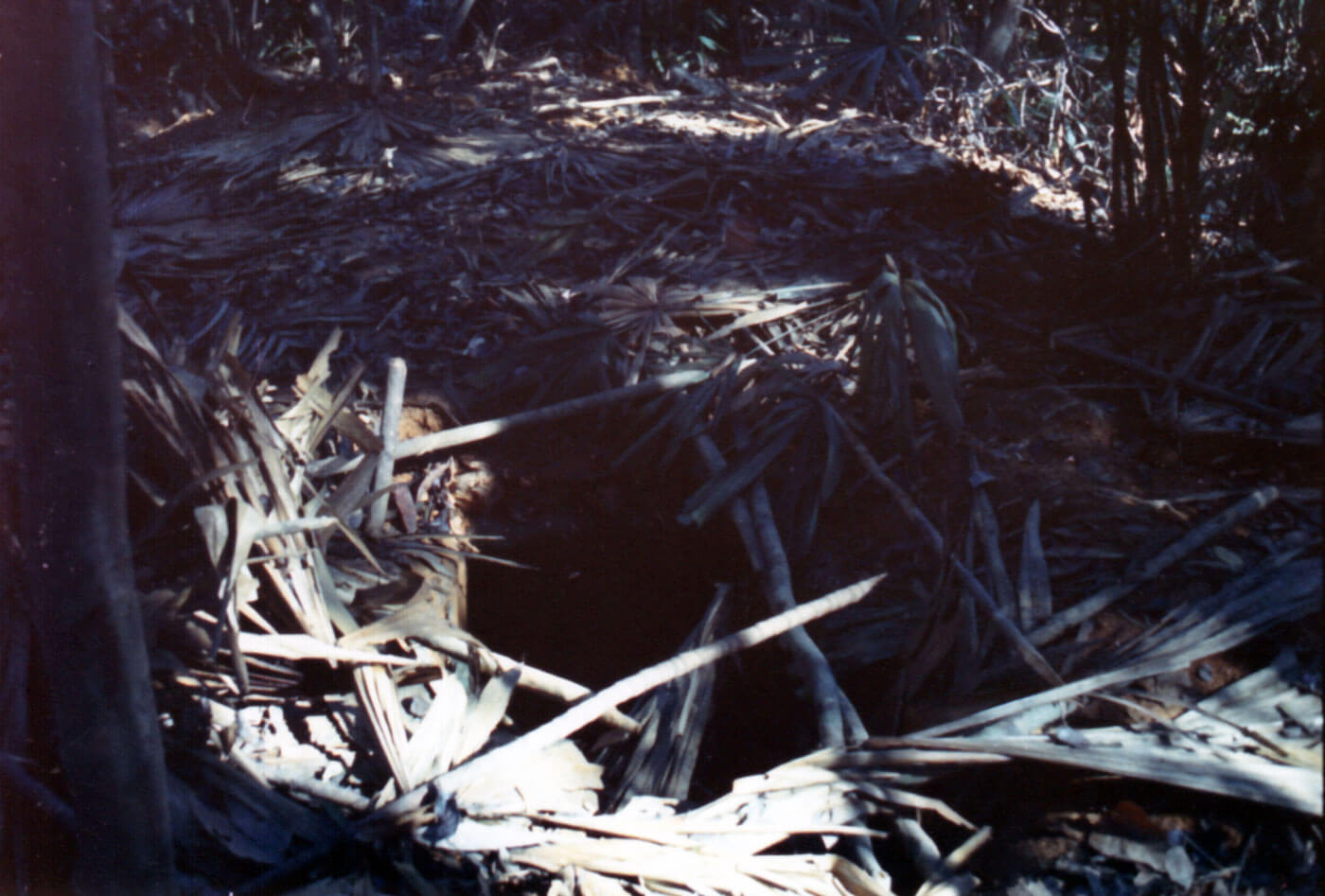
A portal to Hell. The camouflaged entrance to a VC bunker exposed.
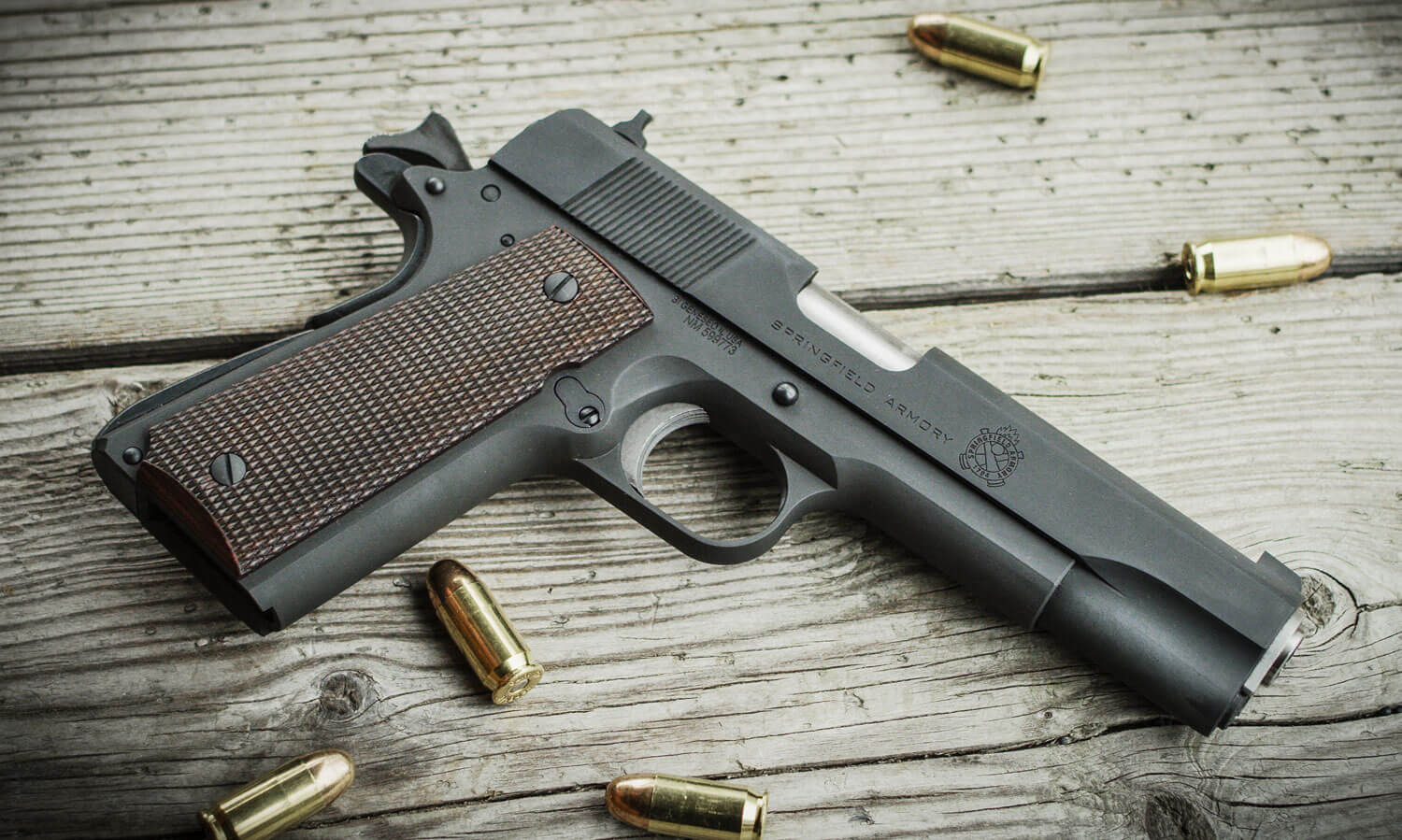
The 1911 Mil-Spec .45 offers modern shooters a chance to own a reasonably priced pistol inspired by the classic M1911 military pistol. Image: Springfield Armory
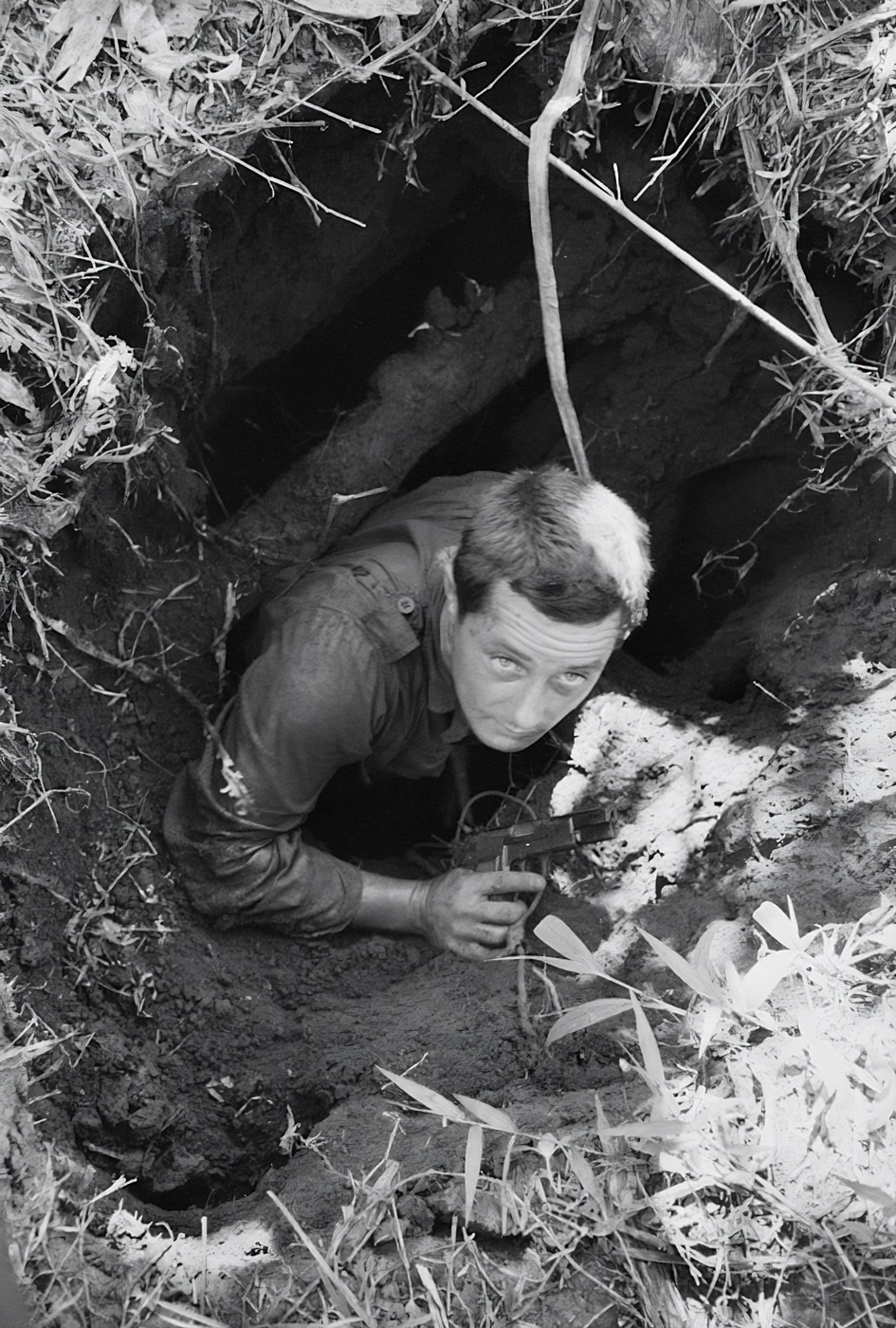
Lance Cpl. Ron Rockliffe of The Royal Australian Regiment (6RAR) emerges from a Viet Cong tunnel entrance during the Vietnam War. Australia’s tunnel rats were as tough as the Americans.
